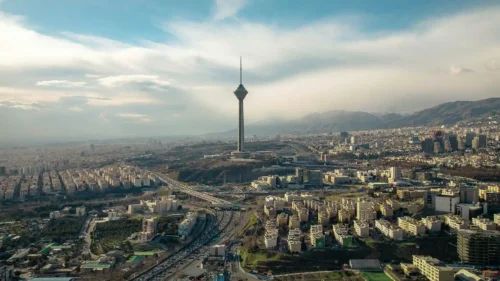
وبلاگ سپهران | Attractions | Tabriz Attractions
Tabriz Attractions, The oldest city in Iran
Tabriz is a beautiful and expansive city located in the northwest of Iran, known as one of the most important cultural and historical centers of the country. This city, with its ancient history, beautiful nature, unique architecture, and its special economic and cultural significance, has become a popular destination for both domestic and international tourists and travelers. Tabriz is renowned as a center for Persian literature, nurturing famous poets such as Sheikh Bahaei, Khaghani, and Master Shahriar. Furthermore, Tabriz is recognized as one of Iran’s major economic centers, with diverse industries including textiles, carpet weaving, and the production of tiles and ceramics. If you want to get acquainted with the sights of Tabriz, join us at Sepehran Blog.
Tabriz is located in the northwest of Iran as the third-largest major city in the country. It is recognized as the largest economic, commercial, political, administrative, communicative, cultural, industrial, and military area in the Azerbaijan region.
Tabriz is a beautiful and clean city in Iran. The people in this region speak Turkish (Azeri language) and are known for their friendliness and hospitality. Due to this, they have excellent interactions with travelers and tourists. The bustling bazaars, historic streets, and delicious local cuisine that you can experience in local restaurants and cafes add to the charm and beauty of this city. Tabriz annually welcomes numerous tourists from all over Iran and the world.
It’s important to note that the residents of this city place great importance on the cleanliness of their city, so it is recommended to refrain from littering while in Tabriz.
Tabriz has a semi-arid climate (cold winters and hot summers). In winters, temperatures can drop below freezing, and snowfall is common. In summers, temperatures can rise above 30 degrees Celsius. As a city with a dry climate, rain in Tabriz is rare and mostly occurs in spring and autumn. Being situated near mountains and valleys, Tabriz experiences moderate climate variations.
In summary, Tabriz has a hot and dry climate in summers and a cold, snowy climate in winters, so it’s advisable to plan your trip considering these weather changes.
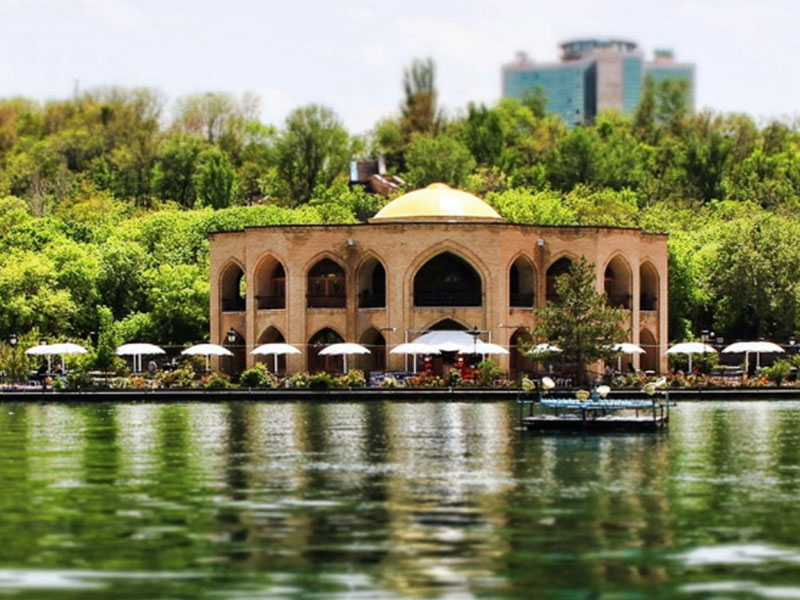
The National Museum of Azerbaijan is located in a historical palace known as the Amir Nezam House, showcasing a collection of historical and cultural artifacts from various periods of Iran’s history.
This museum is one of the important historical museums in Tabriz and is considered a significant tourist destination, offering visitors the opportunity to view valuable artworks and historical artifacts from the region and the country of Iran.
The National Museum of Azerbaijan was established in 1306 and has since been recognized as one of the most important museums in the region and Azerbaijan. It is housed in a historical and beautiful building called the Amir Nezam House, which is an architectural masterpiece on its own. The building combines Azerbaijani and Russian architectural styles and is adorned with beautiful tiles and other artworks.
The National Museum of Azerbaijan has extensive collections of artistic and historical artifacts, including elements from the history, art, literature, music, and culture of Azerbaijan and the Republic of Azerbaijan. These collections include paintings, sculptures, historical documents, handmade carpets, and many other works of art.
The National Museum of Azerbaijan is divided into different sections, each dedicated to a specific aspect of the region’s history and culture. Some of the sections include the History of Azerbaijan, Art and Architecture, Literature and Music, Folk Culture, Painting, and Contemporary Art.
The exact address of the National Museum of Azerbaijan is as follows:
20 Shahrivar Street, First Lane, Number 1, Tabriz, Iran (View on Map)
By visiting the National Museum of Azerbaijan, you can gain a deeper understanding of the history and culture of Azerbaijan and Iran. This museum is a valuable resource for learning about the region’s history and art, and it is recommended to visit it during your trip to Tabriz and create unforgettable memories.
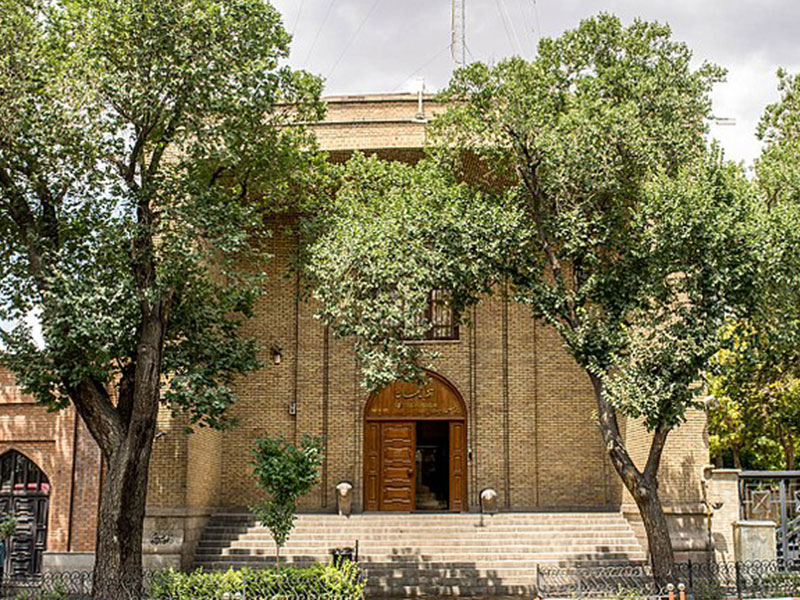
During the reign of Naser al-Din Shah, one of the prominent political figures and renowned writers of the Qajar period, Amir Nezam Garousi, built a mansion for himself that has been used for various purposes to this day.
In the Pahlavi era, this building served as a property and cultural administration office. In 1370, after significant damages were inflicted on this historical building, the Cultural Heritage Organization began the restoration, and in 1385, the Qajar Museum was opened to the public.
This two-story building with an area of 3,000 square meters is a grand and astonishing mansion. Its sturdy and beautiful arches, a large pool filled with water, and gardens adorned with fragrant flowers make it feel like a paradise. The combination of the inner and outer courtyards, lattice windows with colorful glass, and other architectural elements make the Qajar Museum an architectural wonder.
The exact address of the Qajar Museum is as follows:
Sheshgelan Neighborhood, Next to the Children’s Hospital, Behind Sheikh Attar School (View on Map)
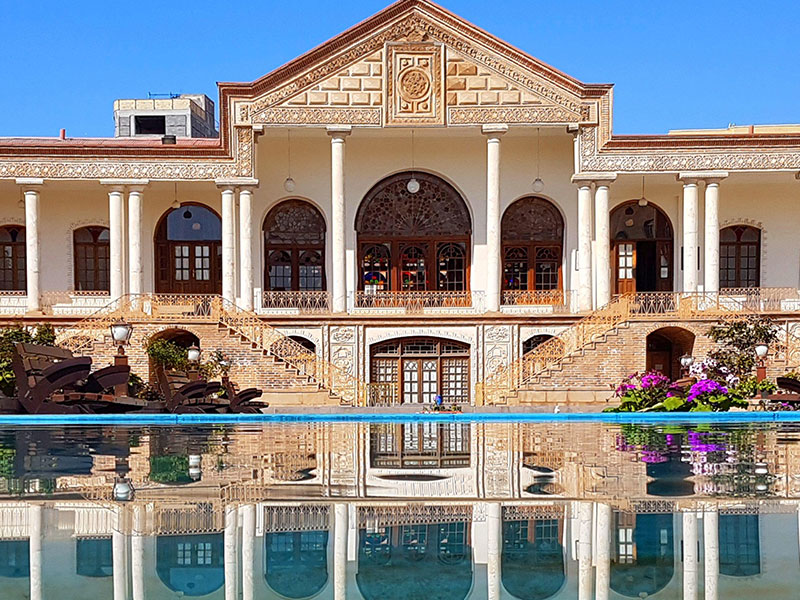
Tabriz The Blue Mosque of Tabriz is an architectural and cultural marvel in the heart of Tabriz with a rich and fascinating history. This spiritual and historical site is considered one of the tourist attractions in the city of Tabriz, and visiting it is a delight. The mosque is famous for its blue tiles and exquisite architecture. It is located in the historic Tabriz Bazaar and holds great religious and cultural significance.
Tabriz The Blue Mosque was constructed during the Qajar period and dates back to 1266 AD. It boasts a unique architectural and interior design. The distinctive architecture reflects the historical significance of this structure.
The mosque features beautiful architecture with elements of traditional Iranian design, including its dome, minarets, and intricate tilework. Its defining feature is its tall blue dome, which is why it is known as the “Blue” Mosque. Inside the mosque, you will find beautiful tilework, wall paintings, and religious decorations that add a remarkable touch to the place.
The Blue Mosque is revered as a religious and spiritual place of worship and is suitable for Muslims to pray and worship. It is conveniently located in the city center, close to other attractions such as the historic bazaars and museums of Tabriz.
The exact address of the Blue Mosque is as follows:
Imam Khomeini (RA) Street, Tabriz, Iran (View on Map)

The Historic Bazaar of Tabriz (Tabriz Grand Bazaar)is one of the most important historical bazaars in Iran and the world, registered on the UNESCO World Heritage List in 1389 (2009). This bazaar covers more than 5,500 shops, 25 caravanserais, and 20 inns. In addition to shopping for various local products and handmade crafts, you can enjoy the beauty of traditional Iranian architecture. T
he history of this bazaar dates back several centuries, and many travelers from the 4th century Hijri such as Ibn Battuta, Marco Polo, Jean Chardin, Yaqut al-Hamawi, and Hamdollah Mostawfi have mentioned this historical market in their memoirs.
The Tabriz Grand Bazaar is recognized as a significant tourist attraction in the city of Tabriz. Furthermore, in the vicinity of this bazaar, you can visit other places of interest such as the Grand Mosque, mausoleums, and historical caravanserais.
The Tabriz Grand Bazaar has traditional and beautiful architecture. The wooden roofs, intricate tilework, and unique entrance gates of the bazaar all reflect its long history.
Within this bazaar, you can find a wide variety of handmade and artistic products, including handwoven carpets and rugs, leather goods, and many other items. Moreover, this bazaar is famous for selling various types of dried fruits, spices and traditional sweets. Inside the bazaar, there are also specialized shops for tea and coffee, where you can experience Iranian and Turkish tea and coffee and purchase these products.
The exact address of the Historic Bazaar of Tabriz is as follows:
Shariati Street, Tabriz, Iran (Tabriz Grand Bazaar)

The Jameh Mosque of Tabriz is one of the most famous historical and religious mosques in Iran, located in the city of Tabriz in East Azerbaijan Province. This mosque, also known as the Friday Mosque, is considered one of the historical and religious symbols of Tabriz. Its construction dates back to the Mongol invasion period, and it was reconstructed by the Seljuks in 707 AH (Islamic calendar).
Throughout history, this mosque has undergone several demolitions and reconstructions. Moreover, during the Qajar period, with the efforts of Naser al-Din Shah, the mosque was beautifully and culturally restored. This place has always been popular among religious individuals and attracts many visitors annually. You can explore the architectural and cultural beauty of this mosque and learn more about the history of Tabriz and Iran.
The Jameh Mosque of Tabriz has a stunning and captivating architectural design. Both the interior and exterior of the mosque feature artistic shapes, stucco work, exquisite tilework, and wooden lattices, reflecting the taste and artistry of the Qajar-era architects. The doors and fountains in this mosque are also exceptionally beautiful.
Inside the Jameh Mosque of Tabriz, you will find prayer halls, columns, pulpits, mihrabs (prayer niches), and designated areas for women. Upon entering the mosque, you will be greeted by beautiful architecture and abundant artistic decorations.
Located within the compound of the Jameh Mosque of Tabriz is the mausoleum of Naser al-Din Shah and his family. The mausoleum, adorned with artistic designs and beautiful tilework, represents its own religious and historical architectural significance.
The precise address of the Jameh Mosque of Tabriz is as follows:
Shariati Street, Tabriz, East Azerbaijan Province, Iran (Jameh Mosque of Tabriz).
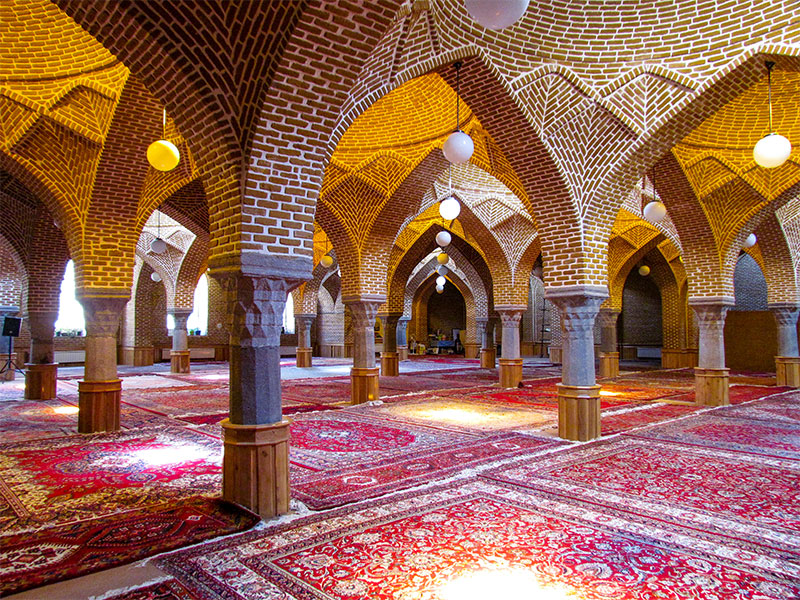
Arg-e-Alishah is a historical fortress located in East Azerbaijan province of Iran, with its construction dating back to the years 718 to 739 AH (Islamic calendar). This fortress is one of the oldest and tallest historical walls in Iran.
Arg-e-Alishah exhibits traditional Iranian architecture and is considered a masterpiece of Iranian architectural art. It is constructed in the form of thick walls with military and defensive towers. This historical structure is strategically positioned to protect against invasions. Over time, it has suffered damage due to earthquakes and constant wars, leading to several reconstruction efforts.
In the past, this site served various purposes such as a storage facility for food and military equipment and a venue for ceremonies. Consequently, the fortress underwent changes over time and transformed into a residence for officials and royalty.
Arg-e-Alishah is located in the southern part of Tabriz city center, near other tourist attractions of the city, such as the Jameh Mosque and the historic bazaar, making it easily accessible.
Arg-e-Alishah has various buildings and remarkable architecture, including storerooms, chambers, halls, courtyards, and towers. Its architecture is attributed to the Azerbaijani style, associated with the region of Azerbaijan. This architectural style dates back to the post-Islamic era. The mastermind behind this extraordinary structure is the Tabrizi architect who employed solid materials and very strong construction techniques in building this massive wall.
The architecture of this fortress is characterized by Iranian architectural styles with designs of thick walls, beautiful minarets, and stone-faced windows adorned with intricate patterns.
Currently, Arg-e-Alishah is recognized as the Tabriz Historical Museum. This museum houses historical, scientific, and cultural artifacts related to the history of Tabriz and the region. Visitors can explore the rich history and culture of this area by visiting this museum.
Location: (Arg-e-Alishah)

It’s hard to find anyone who hasn’t heard of Master Shahriar. Mohammad Hossein Behjat Tabrizi, known as Shahriar, was one of Iran’s renowned poets and a native of Tabriz. His poems are always heard among the people of this city and throughout Iran. If you’re interested in Persian literature and culture, we recommend adding a visit to Shahriar’s House to your to-do list. Shahriar’s House is recognized as an important cultural and literary heritage in Iran, playing a significant role in preserving and promoting Iranian literary and cultural values.
Today, Shahriar’s House is considered one of the famous historical and cultural attractions in Tabriz. This house is located in the Magsudiye neighborhood of Tabriz and belongs to the Pahlavi era. With a total area of 250 square meters and two stories (basement and upper floor), this house attracts many tourists who travel to Tabriz to visit this beautiful place.
Shahriar’s House Museum The architecture of Shahriar’s House is inspired by traditional Iranian architecture. The courtyard and garden create a unique atmosphere as you enter the house, taking you back in time. The brick facade with wooden windows can make your moments here the most beautiful, unique, and vibrant.
In this museum, the life and works of the poet Shahriar are accurately displayed. His personal belongings, poems, and correspondence with famous literary and cultural figures, as well as historical artifacts related to him, are exhibited in this museum.
This museum serves as an active cultural and artistic center, hosting various cultural events, including exhibitions, educational workshops, and literary and artistic ceremonies.
The precise address of Shahriar’s House in Tabriz is as follows:
Magsudiye Neighborhood, South Army Street, Shahriar’s House Museum (Shahriar’s House)
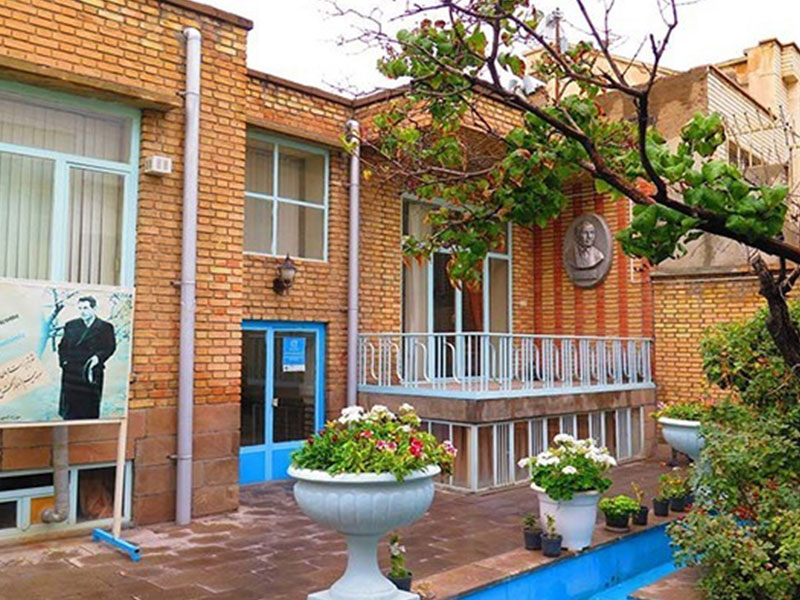
Tabriz Ali Qapu Historical Museum is one of the cultural and historical attractions in the city of Tabriz with Iranian architecture. This historical museum belongs to the Qajar era and is now recognized as one of the important historical museums in Iran.
The name “Ali Qapu” means “High Gate” and is known as one of the symbols of Tabriz city. This building was designed and constructed during the reign of Shah Abbas I by prominent architects, including Magsud Amin al-Saltane. This museum is considered one of the key tourist destinations in Tabriz.
The Ali Qapu building features traditional Iranian architecture. So this building features include:
unique wooden windows, multi-colored bricks, large reception halls, colorful tiles, beautiful mirror work, and stunning interior designs. The construction of this building used marble stone extensively to enhance its grandeur.
The music hall is located on the highest floor of this mansion. So, the plasterwork used in this hall is so exquisite and mesmerizing that spectators become captivated by its immense beauty.
This museum hosts diverse collections of Iranian historical objects and local handicrafts. Inside the museum, you will see collections of carpets, ceramics, decorative elements, architectural samples, and other artifacts related to the history and art of Iran.
The museum offers exceptional amenities, including a café and a shop for purchasing souvenirs and handmade products. Additionally, in the museum’s outdoor area, there is a peaceful space for strolling and relaxation.
Location: (Tabriz Ali Qapu Historical Museum)
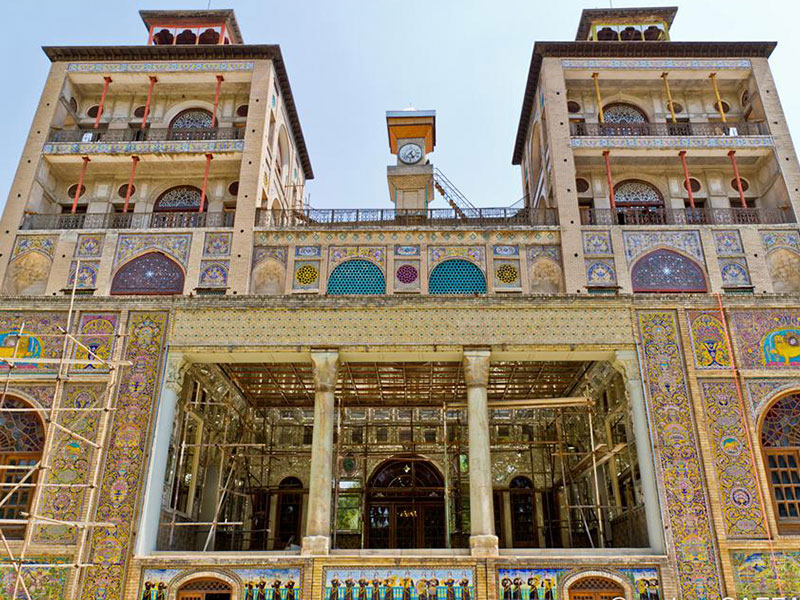
Maqbarat o-shoara is a cultural attraction for poetry and literature enthusiasts. Many renowned Iranian poets rest in this place, and it is visited by numerous tourists annually in Tabriz.
Asadi Tusi, Qatran Tabrizi, Khaqani Shirvani, Majd al-Din Bilqani, Zahir al-Din Faryabi, Shahpur Nishaburi, Shams al-Din Sajasi, Dhulfeqar Shirvani, Humam Tabrizi, Salman Savaji, Qutb al-Din Shirazi, Maghrebi Tabrizi, Mani Shirazi, Lessani Shirazi, and Shakibi Tabrizi, and Shahriar.
Maqbaratoshoara features a beautiful blend of traditional and modern Iranian architecture. The gate and the mihrab (prayer niche) of the tomb are adorned with intricate tilework and attractive enamels. So, the intricately interwoven arches signify the grandeur of this mausoleum. The interior walls of Maqbarat o-shoara are adorned with poems and works of famous poets, as well as decorated with paintings and calligraphy.
The construction of this structure utilizes both concrete and metal. So, the outer covering of the mausoleum is made of concrete, while its underlying layers consist of metal. A large central chamber, along with several smaller rooms, makes up the main space of Maqbaratoshoara. It’s worth mentioning that a bookstore and handicraft shop are also located within this mausoleum, providing you with shopping opportunities during your visit.
Sarkhab neighborhood, Tabriz (Maqbaratoshoara)
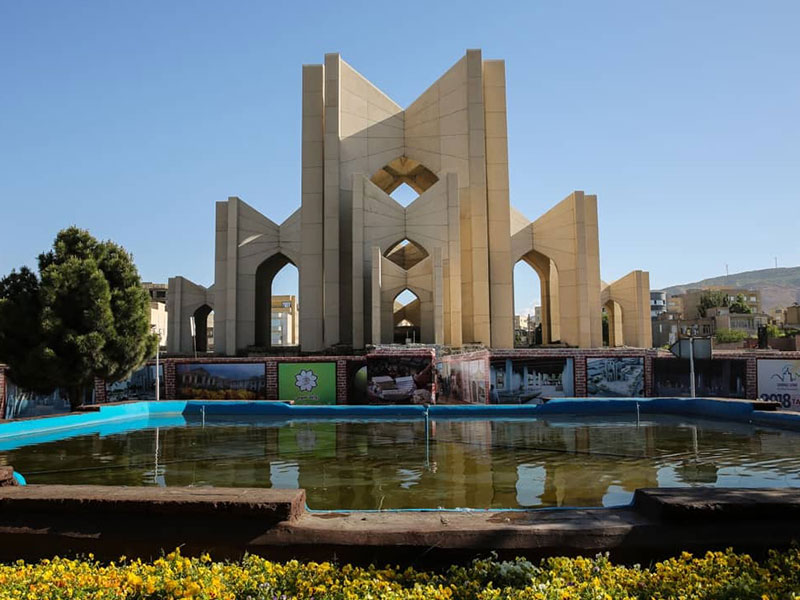
Tabriz is a historical and cultural city with natural beauty and influential architecture. The historic bazaar, Jameh Mosque, Arg-e-Alishah, Shahriar’s House, and other cultural and historical attractions make for an unforgettable travel experience in the minds of every tourist. Additionally, Tabriz is recognized as an important industrial and commercial center in Iran and boasts numerous markets and caravanserais that provide a diverse shopping experience.